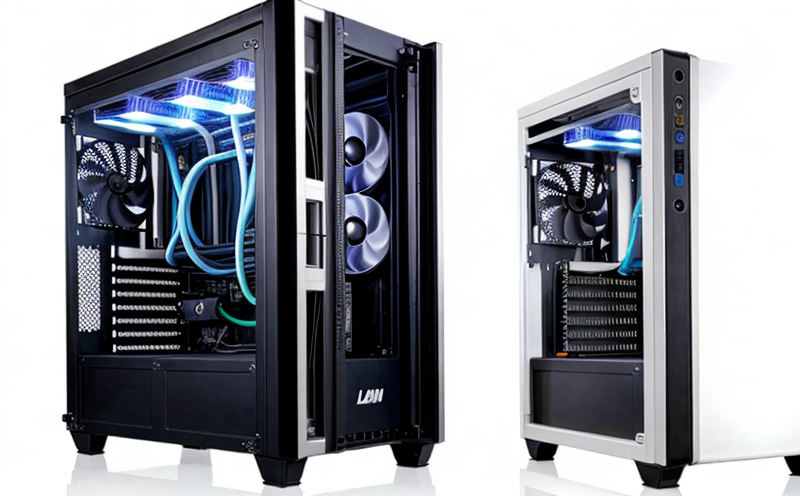EN 13053 Chiller Plant Performance Testing
The European Standard EN 13053 provides a framework for assessing the performance and capacity of chiller plants used in HVAC (Heating, Ventilation, and Air Conditioning) systems. This standard is crucial for ensuring that chillers operate efficiently and meet design specifications. Compliance with this standard not only enhances the reliability of the system but also contributes to energy savings and environmental sustainability.
Chillers are critical components in HVAC systems, responsible for cooling water or air to a specified temperature range. The performance testing under EN 13053 involves evaluating various parameters such as chilled water outlet temperature, flow rates, pump head pressures, and electrical power consumption. These tests help identify any discrepancies between the actual performance of the chiller plant and its design capacity.
The testing process typically begins with a thorough inspection of the chiller plant to ensure all components are in working order. Once the equipment is ready, the test parameters are set according to the standard's requirements. The chilled water outlet temperature is monitored closely as it directly impacts the overall efficiency of the system. Additionally, flow rates and pump head pressures must adhere to specified limits to maintain optimal performance.
The electrical power consumption is another key metric that is carefully measured during testing. Excessive power usage can indicate inefficiencies or potential issues with the chiller plant's design or operation. By comparing the actual power consumption against the theoretical values, any deviations can be pinpointed and addressed promptly.
After completing the initial tests, adjustments may be made to fine-tune the system for maximum efficiency. This process involves recalibrating sensors, optimizing pump speeds, or making minor modifications to the chiller settings. Once these adjustments are implemented, a second set of performance tests is conducted to verify improvements.
Quality assurance plays a vital role in ensuring that all test results meet the stringent requirements outlined in EN 13053. A list of key parameters for quality and reliability assurance includes:
- COP (Coefficient of Performance) – This metric indicates how efficiently the chiller is converting electrical energy into cooling capacity.
- Part Load Ratio – Reflects the efficiency at different operating points, which helps identify potential inefficiencies during partial load conditions.
- Suction and Discharge Pressure Ratios – These ratios help assess the refrigeration cycle's effectiveness and indicate any issues with the compressor or evaporator.
The test results are then compiled into a detailed report, providing comprehensive insights into the chiller plant's performance. This report serves as a valuable tool for quality managers and compliance officers to make informed decisions regarding maintenance schedules, equipment upgrades, and operational strategies.
By adhering to EN 13053, organizations can ensure that their HVAC systems operate at peak efficiency, reducing energy costs and minimizing environmental impact. The standard's rigorous testing protocols help identify areas for improvement, ensuring long-term reliability and sustainability of the chiller plant.
Why It Matters
The importance of EN 13053 in HVAC performance testing cannot be overstated. This standard is designed to ensure that chiller plants operate efficiently, which has a direct impact on energy consumption and operational costs. By adhering to the stringent requirements outlined in EN 13053, organizations can:
- Reduce energy bills through optimized performance.
- Promote environmental sustainability by minimizing greenhouse gas emissions.
- Ensure compliance with local and international regulations on HVAC system efficiency.
- Evaluate the reliability of chiller plants, reducing downtime and maintenance costs.
- Improve overall building comfort by maintaining precise temperature control.
The standard's focus on energy efficiency is particularly important in today’s world where sustainability has become a key priority. By implementing EN 13053-compliant testing, organizations can contribute to global efforts to reduce carbon footprints and promote eco-friendly practices.
For quality managers and compliance officers, ensuring adherence to this standard provides peace of mind that the HVAC systems are operating at their best capacity. R&D engineers benefit from detailed performance data that can inform future design improvements, while procurement teams can leverage these insights to select high-performing equipment for new projects.
Quality and Reliability Assurance
- COP (Coefficient of Performance): This metric is crucial as it measures the efficiency of the chiller in converting electrical energy into cooling capacity. A higher COP indicates better performance, which translates to lower operational costs.
- Part Load Ratio: This parameter assesses the system's efficiency at various operating points, particularly during partial load conditions. It helps identify potential inefficiencies and areas for improvement.
- Suction and Discharge Pressure Ratios: These ratios are vital in evaluating the refrigeration cycle's effectiveness. They provide insights into the performance of the compressor and evaporator, helping to pinpoint any issues that need attention.
The standard also emphasizes the importance of regular maintenance and calibration to ensure consistent performance over time. By adhering to these quality assurance measures, organizations can maintain the reliability of their HVAC systems and extend their operational life.
International Acceptance and Recognition
The EN 13053 standard has gained widespread acceptance and recognition in the HVAC industry. Many countries around the world have adopted this standard as a benchmark for measuring chiller plant performance. This international acceptance ensures that organizations can confidently apply this standard regardless of their location.
Recognizing the importance of consistent performance metrics, many regulatory bodies worldwide have endorsed EN 13053. Compliance with this standard not only enhances an organization's reputation but also opens up opportunities for global business expansion.
The European Commission and various national standards organizations have embraced EN 13053 as a key component of their efforts to promote energy efficiency and sustainability in HVAC systems. By adhering to these internationally recognized standards, organizations can ensure that they are meeting the highest industry benchmarks.





